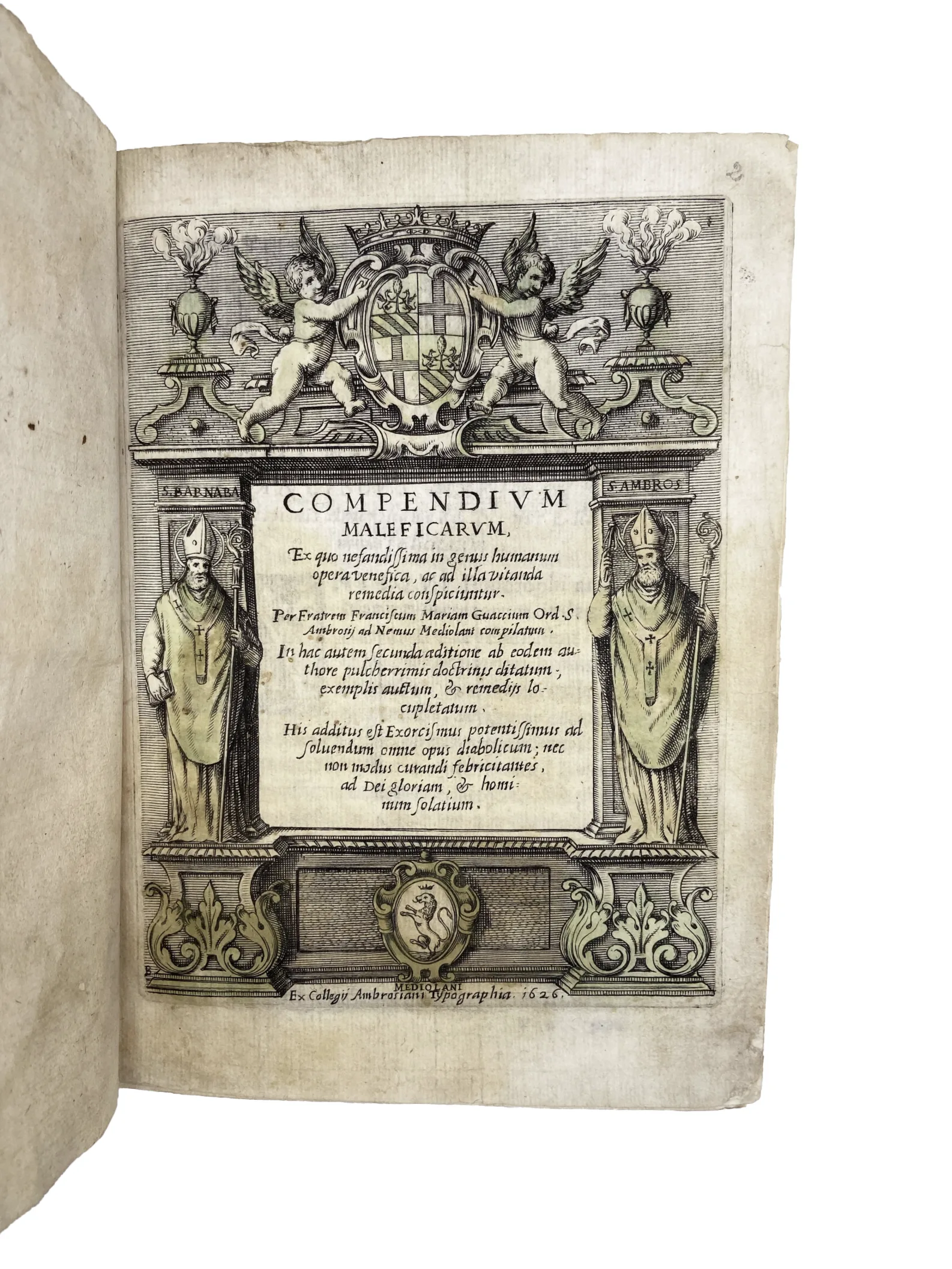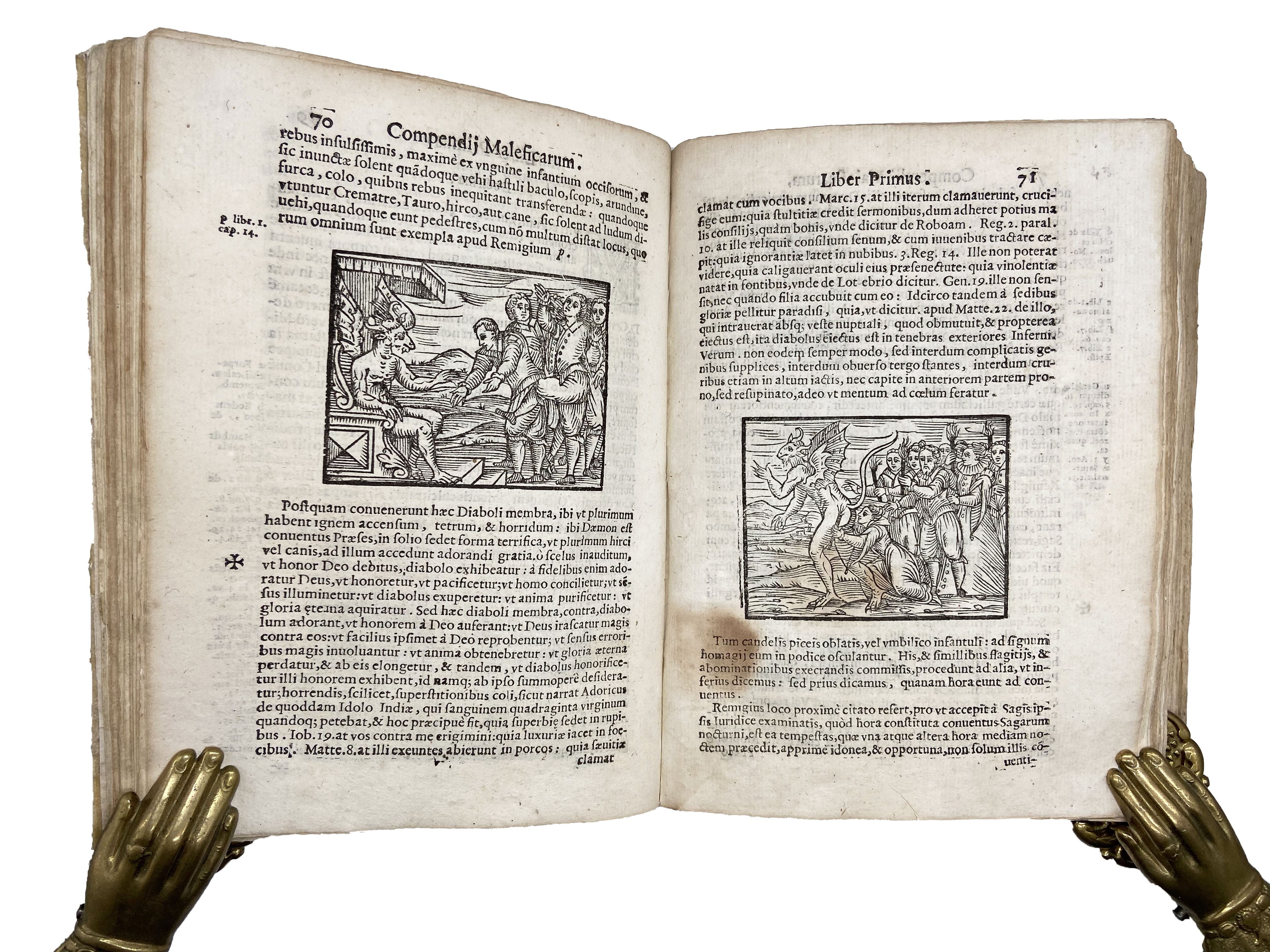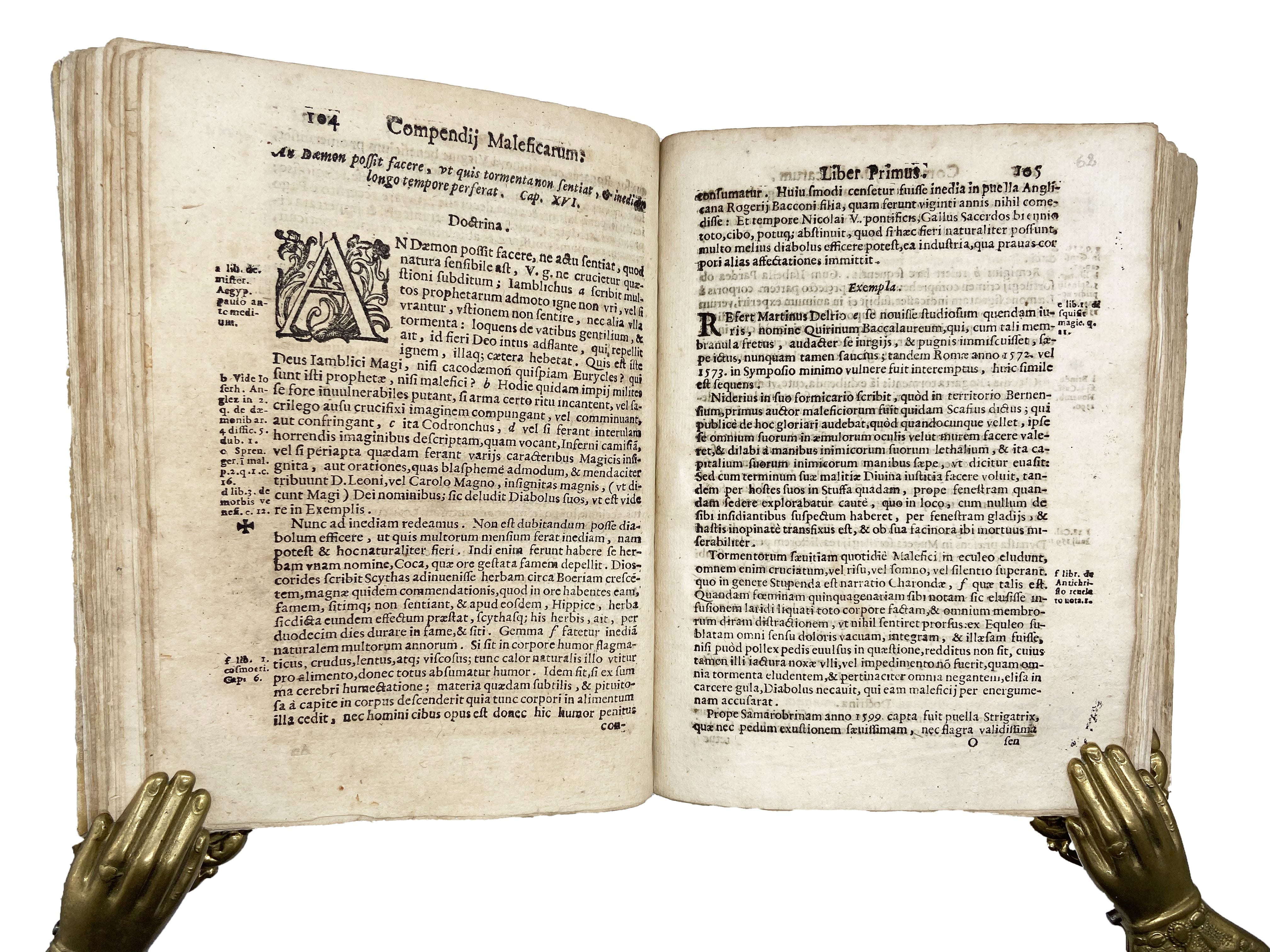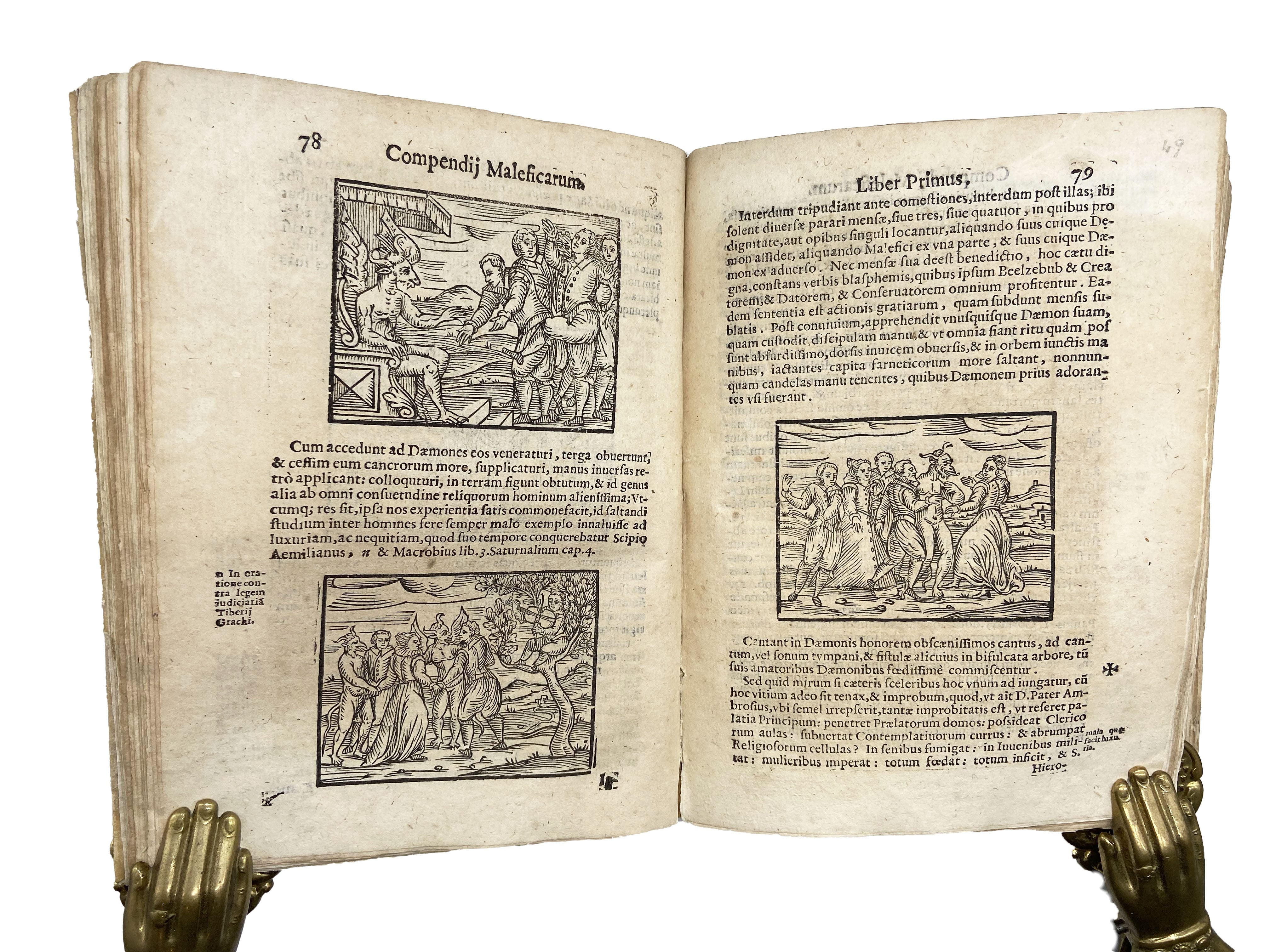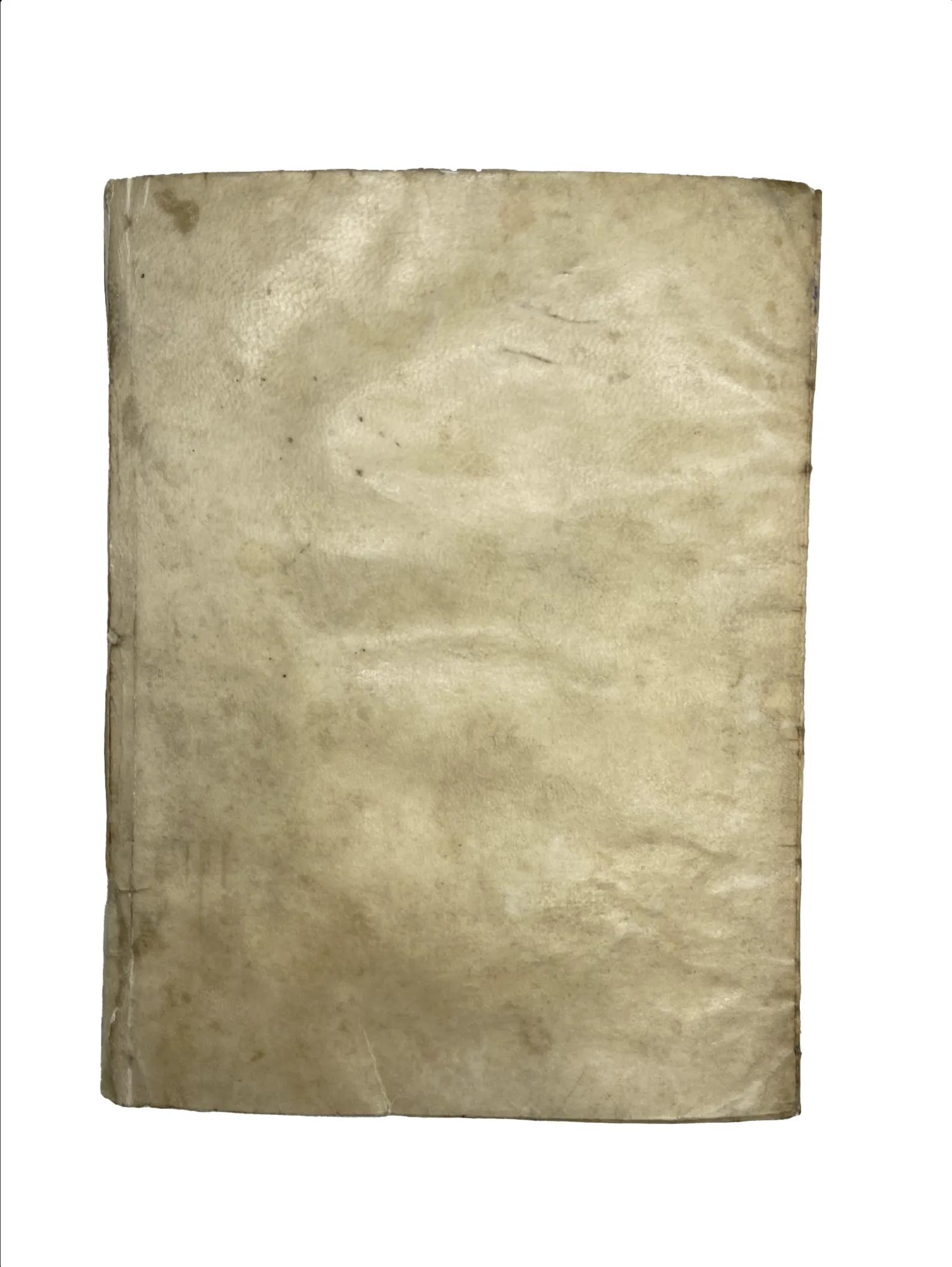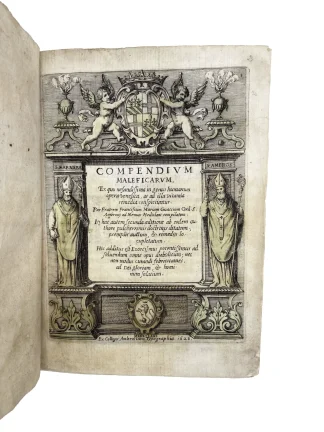GUAZZO, Francesco Maria.
ILLUSTRATED WITCHCRAFT
Compendium Maleficarum.
Milan, ex collegi Ambrosiani typographia, 1626£14,500.00
4to, pp. (xviii) 391 (iii). Roman and italic letter. Woodcut floriated initials, decorated headpiece and tailpiece, typographical ornaments. T-p within engraved architectural border with standing figures of St. Ambrose and St. Barnabas, urns, arms of the Serbelloni family supported by putti. 40 half page woodcuts (some repeated) depicting witches, demons and sorceries. Very rare marginalia. Intermittent light age browning and mostly marginal spotting, t-p lightly coloured green, minor oil splashes, many deckle edges. A good, well margined copy in contemporary vellum, lower compartment of spine restored, later eps. Contemporary faded autograph to recto of fly.
Second edition of this finely illustrated manual on witchcraft and demonology by Francesco Maria Guazzo (1570-1640). Significantly enlarged and revised from the rare original of 1608, it includes a new final appendix on the rite of exorcism and additional blessing formulas.
A friar of the Order of St. Ambrosius ad Nemus in Milan, Guazzo was a member of the Inquisition tribunal and a highly regarded scholar in the field of demonology, who travelled around Europe visiting the places where cases of witchcraft occurred in order to perfect his knowledge. He is also famous for his successful exorcisms on personalities including Charles III of Lorraine and the German Duke of Julich- Kleve-Berg. The ‘Compendium Maleficarum’ is an epitome of his theoretical and practical knowledge of witchcraft and its manifestations, inspired by previous works on demonology by Michele Psellus, Giacomo Sprenger and Nicholas Rémy.
The 40 fascinating woodcuts are among the most renowned early modern illustrations of witchcraft. These vivid pictures portray winged devils, assemblies of witches, demonic animals, and sorcery at work. We can observe all the phases of the pact with the devil: the abjuration with outrage to the cross, a new oath of fidelity and baptism, the adepts registered in the book of the dead and marked, the flight to the Sabbath, a banquet and sacrifices. These are influenced not only by the medieval figurative tradition but also by more recent illustrations of the New World, including scenes with cannibals often shown, like some of Guazzo’s witches, roasting children. Due to this controversial iconography, several copies of this work were destroyed and censured.
The work is divided into three books, and each sub-chapter comprises a presentation of theorical concepts (‘doctrina’) followed a discussion of the evidence provided by various authors. The first book deals with the nature of imagination and magic, the rituals of witches, their pacts with the devil and their ‘maleficia’, like apparitions and copulation with demons. The second focuses on a variety of sorcery including soporific poison and rare illnesses. The third teaches how to recognize demons, witches, and their manifestations, and reveals divine and natural remedies to defeat them, from prayers to blessed tree branches. The opening dedication to Cardinal Giovanni Antonio Serbelloni, whose heraldic escutcheon decorates the title-page, summarises the crucial question of the ‘Compendium’, that demons find their abode in heresy and idolatry.
USTC 4007048; Caillet II, 4805: ‘Avec beau frontispice en taille douce et un grand nombre de figures sur bois des plus curieuses’; BM STC C17 It. p. 417; Gaïta 374. Not in Alden, Brunet, Graesse or Kraus.In stock


